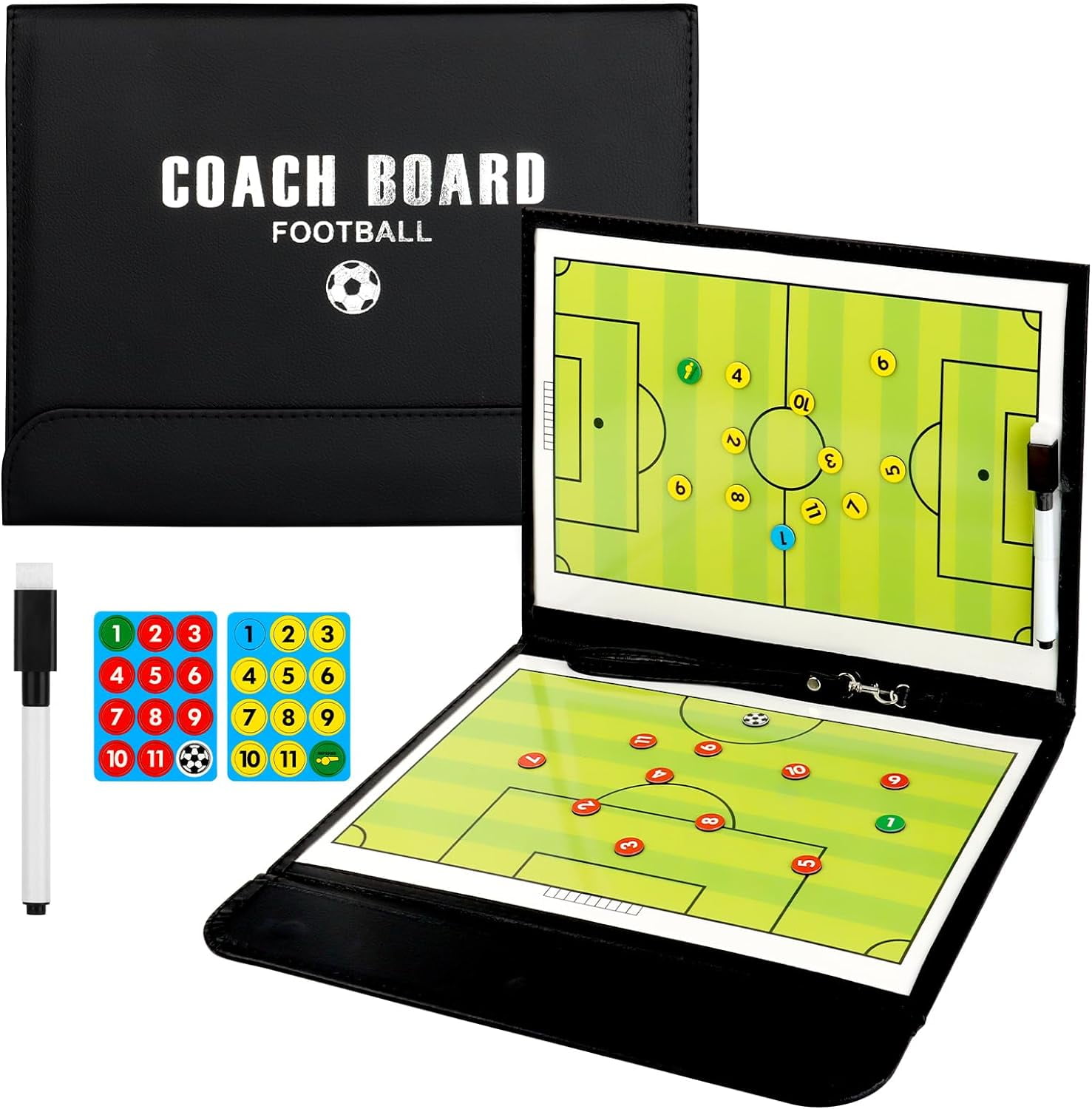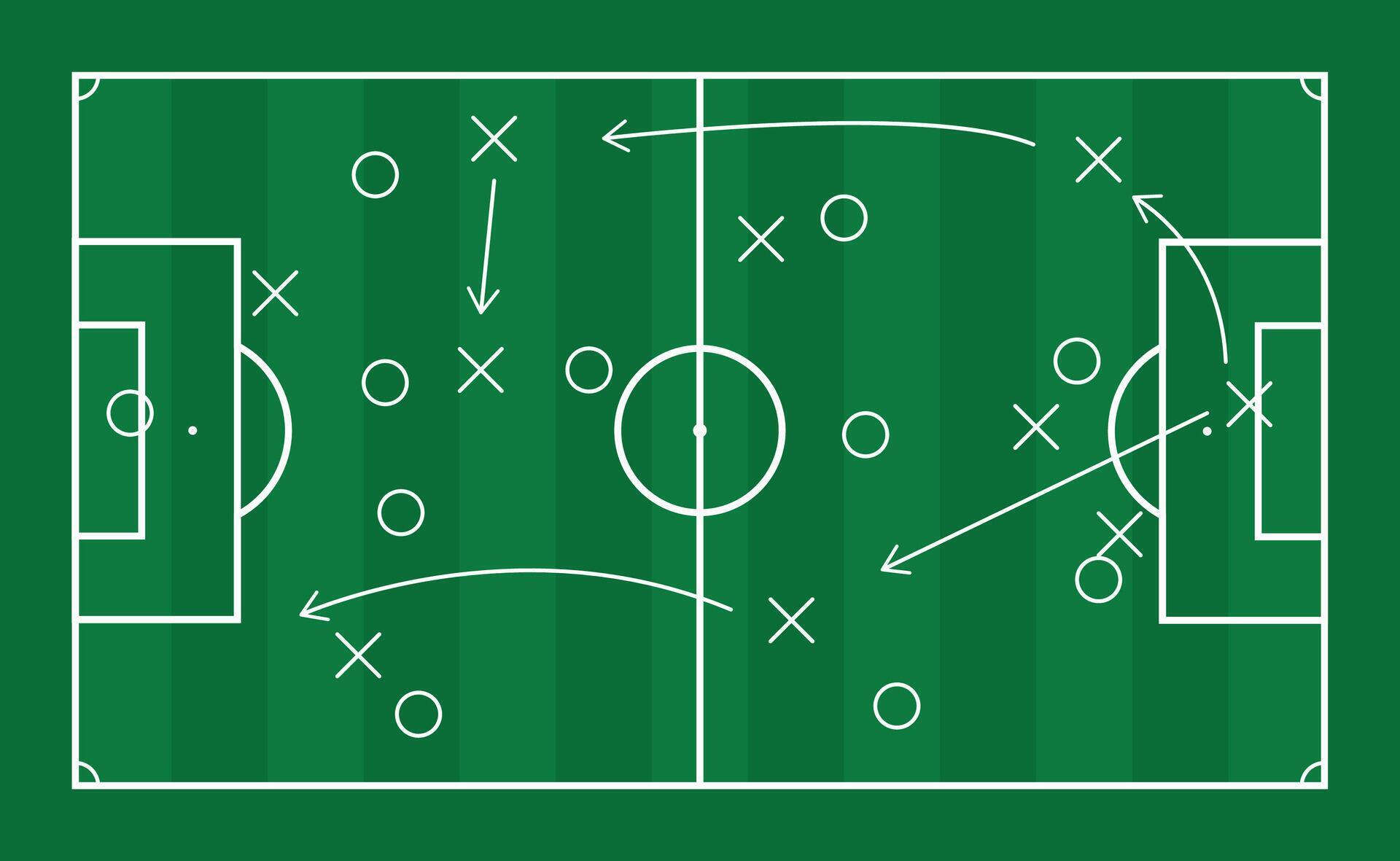
The Mastermind on the Sidelines: Football Tactics and Strategies for Coaches
Football, often dubbed "the beautiful game," is far more than just 22 players chasing a ball. Beneath the surface of individual brilliance and athletic prowess lies a complex tapestry of tactics and strategies, meticulously woven by the coach. For any aspiring or seasoned football coach, understanding and implementing effective tactical approaches is paramount to building a successful team and achieving consistent results. This article delves into the multifaceted world of football tactics and strategies, offering insights and frameworks for coaches to elevate their game.
The Coach’s Philosophy: The Foundation of All Tactics
Before diving into specific formations or pressing schemes, a coach must first establish a clear football philosophy. This philosophy is the guiding principle that dictates every tactical decision, from player recruitment to in-game adjustments. It answers fundamental questions: What kind of football do we want to play? What are our core values? Do we prioritize possession, direct attacking, defensive solidity, or a blend?
A well-defined philosophy provides identity and consistency. It allows players to understand their roles within a larger framework and fosters a cohesive team dynamic. Without this foundation, tactical decisions can appear arbitrary and confuse players, leading to disjointed performances.
Understanding Your Players: The Human Element
Tactics are not one-size-fits-all. A coach must critically assess the strengths, weaknesses, and unique attributes of their available players. An ideal tactical system should maximize individual talents while mitigating collective vulnerabilities. Trying to force a possession-based "tiki-taka" style on a team lacking technically gifted midfielders, for instance, is a recipe for disaster.
Key considerations include:
- Technical Skill: Passing, dribbling, shooting, first touch.
- Physical Attributes: Speed, strength, endurance, aerial ability.
- Tactical Intelligence: Positional awareness, decision-making under pressure.
- Mental Fortitude: Resilience, leadership, communication.
The best coaches are those who can adapt their tactical blueprint to suit the players they have, rather than rigidly adhering to a preferred system that doesn’t fit the personnel.
Defensive Strategies: Building an Impenetrable Wall
A strong defense is often the bedrock of success. Coaches must instill defensive discipline, organization, and a collective responsibility to protect the goal.
1. Defensive Shape and Organization:
- Compactness: The team must maintain a narrow and deep shape when defending, minimizing space between lines and denying opponents passing lanes. This forces opponents wide or encourages long, speculative passes.
- Zonal vs. Man-Marking vs. Mixed:
- Zonal Marking: Players are responsible for a specific area of the pitch. When an opponent enters their zone, they mark them. This maintains defensive shape but can be vulnerable to quick movement.
- Man-Marking: Each defender is assigned a specific opponent to track. This can nullify key players but can pull defenders out of position and create gaps.
- Mixed Marking: A common and often effective approach, combining zonal principles in central areas with man-marking of key attackers or in specific situations (e.g., set pieces).
- Defensive Line: High line (to press and condense play) vs. Deep block (to protect space behind and frustrate attackers). The choice depends on player speed, pressing scheme, and opponent’s attacking style.
2. Pressing Systems:
- High Press: Engaging opponents high up the pitch, often in their defensive third, to win the ball back quickly and create immediate scoring opportunities. Requires high energy, coordinated movement, and brave defenders.
- Mid-Block: Allowing opponents to progress into the middle third before engaging. Aims to cut off passing lanes into dangerous areas and force turnovers in midfield. Less physically demanding than a high press.
- Low Block: Sitting deep in their own half, often with two compact lines of four or five, to deny space in the penalty area. Primarily used against superior attacking teams or to protect a lead.
- Pressing Triggers: Defining clear signals for when to initiate a press (e.g., a bad pass, a heavy touch, a back pass to the goalkeeper, a specific player receiving the ball).
3. Defensive Transitions:
The moment possession is lost is critical.
- Immediate Reaction (Counter-Press): The closest players immediately press the ball carrier to win it back or prevent a quick counter-attack.
- Regrouping: If the immediate press fails, players must quickly track back to regain their defensive shape and deny space.
- Delaying: One or two players delay the opponent’s attack, allowing teammates time to recover.
Offensive Strategies: Creating and Converting Chances
Attacking football is about creativity, penetration, and clinical finishing. Coaches must devise strategies to break down defenses and score goals.
1. Build-up Play:
- Playing Out From The Back: Utilizing the goalkeeper and defenders to initiate attacks with short, controlled passes, aiming to draw opponents out and create space further up the pitch. Requires technical proficiency and composure under pressure.
- Direct Play: Bypassing the midfield with long passes, often targeting a striker or wingers running into space behind the defense. Effective for exploiting slow defenses or when facing a high press.
2. Attacking Principles:
- Width: Utilizing wingers or overlapping full-backs to stretch the opponent’s defense and create space in central areas.
- Depth: Having players in different attacking lines to offer varied passing options and penetrate behind the defense.
- Penetration: The ability to get the ball into dangerous areas (e.g., the penalty box, behind the defensive line).
- Overloads: Creating numerical superiority in specific areas of the pitch to facilitate passing combinations and break through defensive lines.
3. Attacking Systems:
- Possession-Based Football: Emphasizing ball retention, patient build-up, and intricate passing patterns to control the game and wear down opponents.
- Counter-Attacking Football: Absorbing pressure defensively and then launching rapid, incisive attacks upon winning the ball, exploiting the opponent’s disorganization. Relies on speed, directness, and clinical finishing.
- Fluid Attacking: Encouraging positional rotation and intelligent movement from attackers to create unpredictability and confuse defenders.
4. Attacking Transitions:
When possession is won, the immediate reaction is crucial.
- Exploiting Disorganization: Quick, incisive passes forward to capitalize on the opponent’s defensive disarray.
- Supporting the Attack: Midfielders and defenders quickly push forward to offer passing options and create numerical advantages.
Midfield Dynamics: The Engine Room
The midfield is often considered the most crucial area of the pitch, linking defense and attack and controlling the tempo of the game.
- Holding Midfielder (DM): Screens the defense, breaks up play, and initiates attacks from deep. Requires tactical discipline and good passing range.
- Box-to-Box Midfielder (CM): Covers vast amounts of ground, contributing to both defense and attack. Requires high stamina, good tackling, and goal-scoring instincts.
- Attacking Midfielder (AM): Operates in the "hole" behind the striker, linking midfield and attack, creating chances, and scoring goals. Requires creativity, vision, and technical flair.
Coaches must find the right balance and combination of these roles to control the midfield, win second balls, and dictate the flow of the game.
Set Pieces: Hidden Gold
Often overlooked, set pieces (corners, free-kicks, throw-ins) can account for a significant percentage of goals.
1. Offensive Set Pieces:
- Corners: In-swinging vs. out-swinging, near post runs, far post headers, blocks, short corners, direct shots. Coaches must design specific routines that exploit opponent weaknesses or player strengths.
- Free-kicks: Direct shots, crosses into dangerous areas, intricate routines to create confusion or free a player for a shot.
2. Defensive Set Pieces:
- Marking: Zonal, man-to-man, or mixed marking schemes to cover opponents and key areas.
- Clearance Zones: Designating players to clear the ball from specific areas.
- Counter-Attack Potential: Positioning players to launch a quick counter if the ball is won.
Match Management and Adaptability
A coach’s role doesn’t end with the pre-game plan. In-game management is where tactical acumen truly shines.
- Pre-match Scouting: Thorough analysis of the opponent’s strengths, weaknesses, formations, and key players. This informs the initial game plan.
- In-game Adjustments:
- Substitutions: Introducing fresh legs, changing tactical personnel (e.g., an extra attacker), or shoring up the defense.
- Formation Changes: Shifting from a 4-3-3 to a 4-4-2, or a 3-5-2 to a 4-2-3-1, to counter opponent tactics or chase a goal.
- Tempo Control: Instructing players to speed up play, slow it down, or manage the clock.
- Psychological Management: Motivating players, calming nerves, or injecting urgency.
- Half-time Analysis: Using the break to assess the first half, communicate adjustments, and reinforce the game plan.
Training and Implementation: Bringing Tactics to Life
The most brilliant tactical plan is useless without effective implementation on the training ground.
- Repetition: Drills that simulate game situations and reinforce tactical movements.
- Progressive Drills: Starting with simple exercises and gradually increasing complexity, moving towards full-sided game scenarios.
- Small-Sided Games (SSGs): Excellent for developing tactical understanding, decision-making, and intensity in game-realistic environments.
- Video Analysis: Reviewing training sessions and matches to highlight tactical successes and areas for improvement, providing concrete visual feedback to players.
- Clear Communication: Articulating tactical instructions clearly and concisely, ensuring every player understands their role and responsibilities.
- Player Buy-in: Explaining the "why" behind tactical decisions to foster understanding and commitment from the squad.
The Evolving Game: Staying Ahead of the Curve
Football tactics are not static. The game is constantly evolving, with new trends, formations, and player profiles emerging. Coaches must be perpetual students, observing, analyzing, and adapting their approaches. Studying successful teams, attending coaching courses, and engaging in continuous learning are vital for staying at the forefront of tactical innovation.
Conclusion
Football tactics and strategies are the heart of a coach’s craft. From establishing a foundational philosophy and understanding player attributes to meticulously designing defensive and offensive systems, managing games, and implementing plans on the training pitch, the role demands immense knowledge, adaptability, and leadership. The successful coach is not merely a motivator but a mastermind, constantly orchestrating the beautiful game with a strategic vision that propels their team towards victory. It is a journey of continuous learning, refinement, and the relentless pursuit of tactical mastery.



